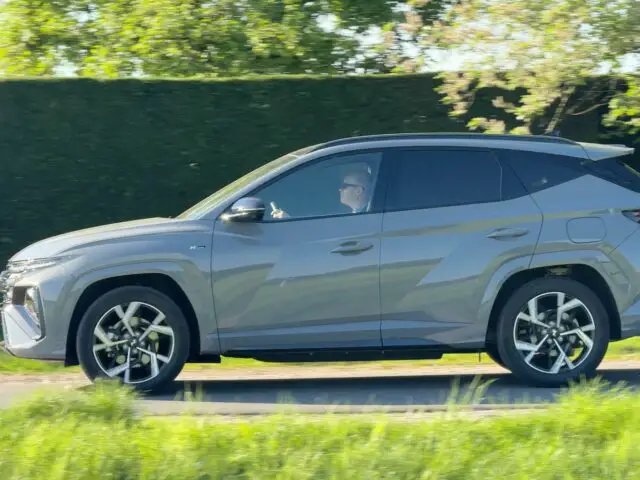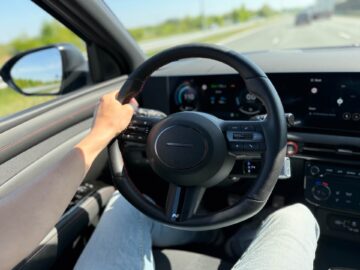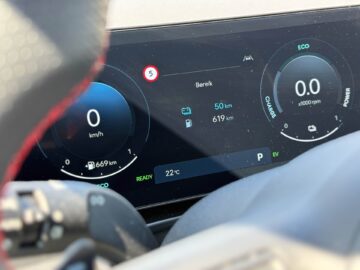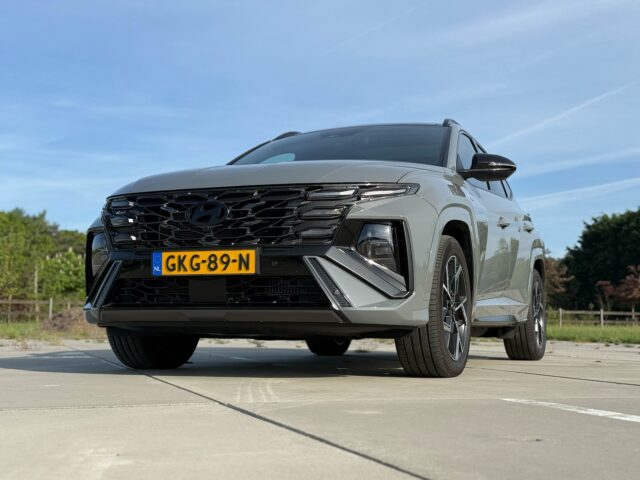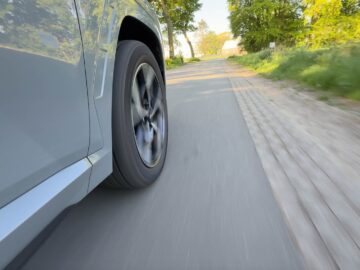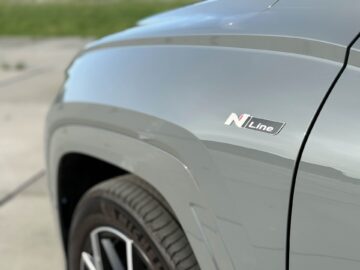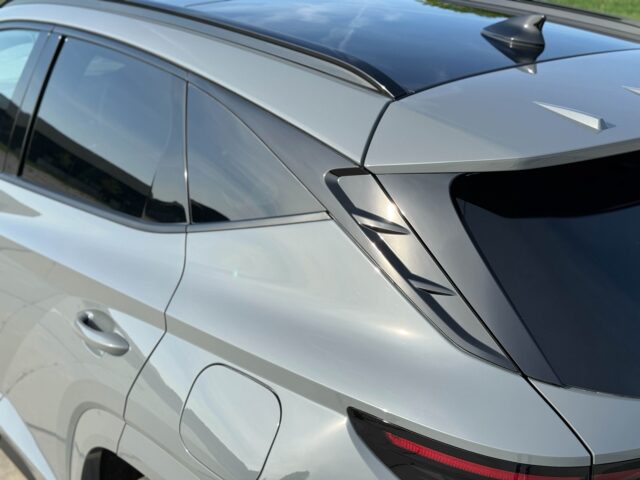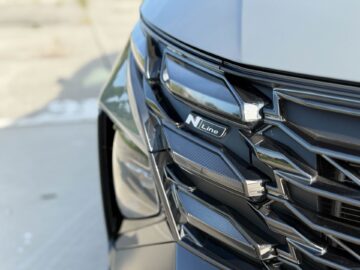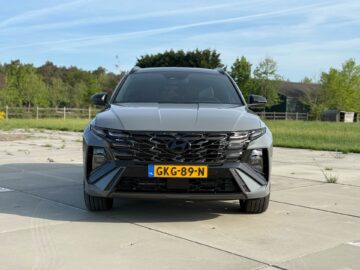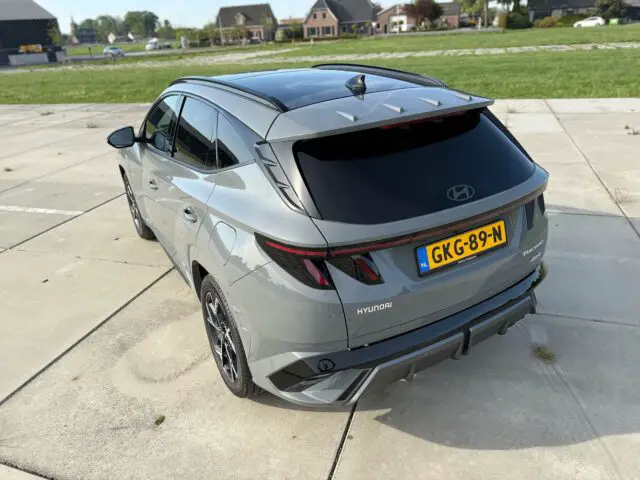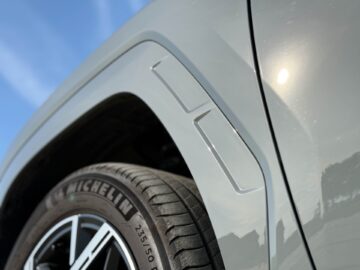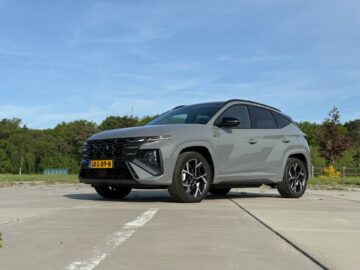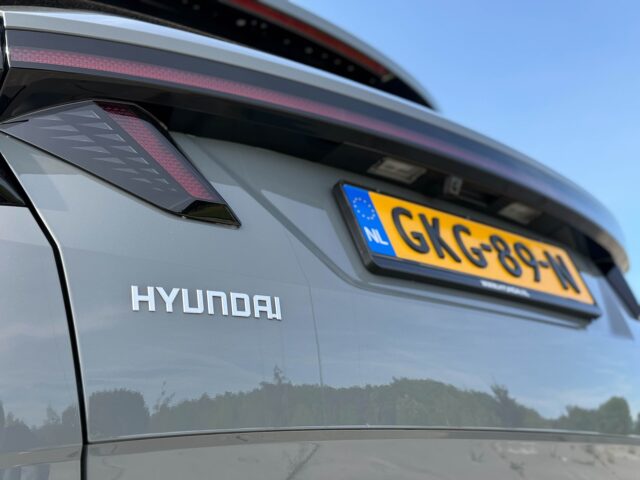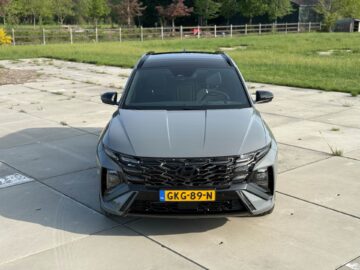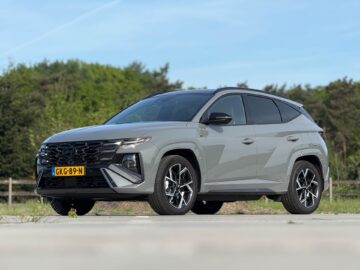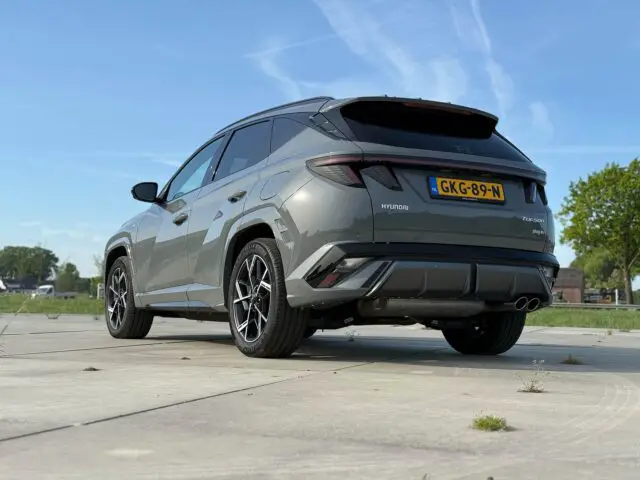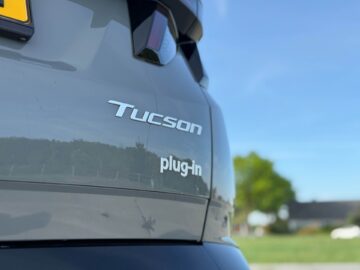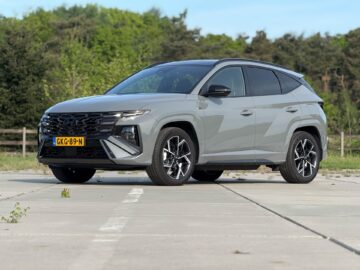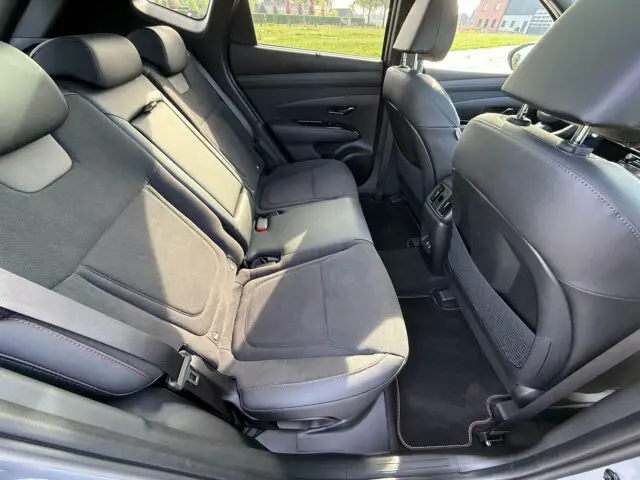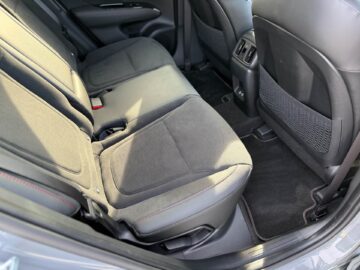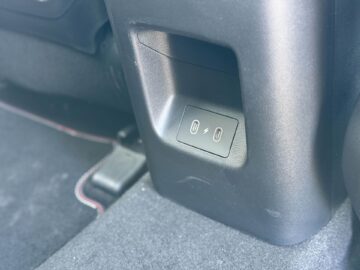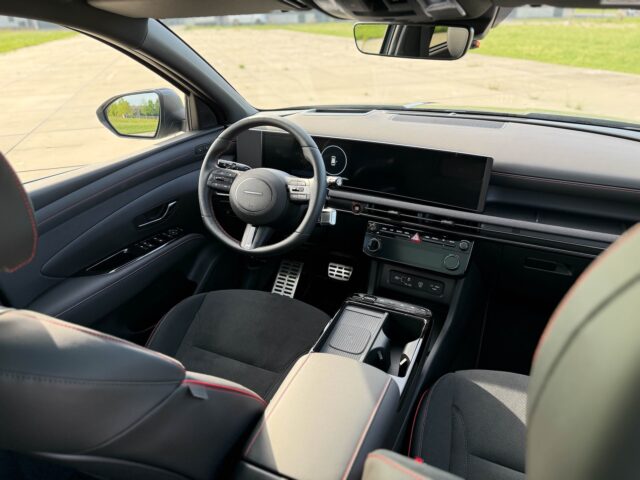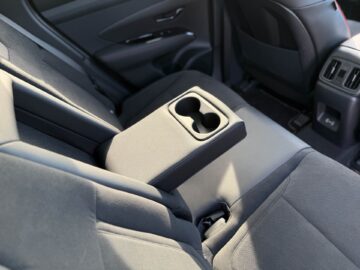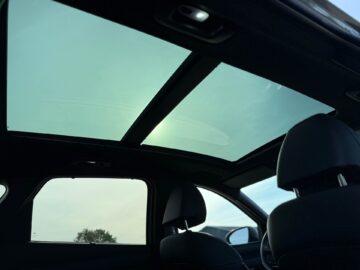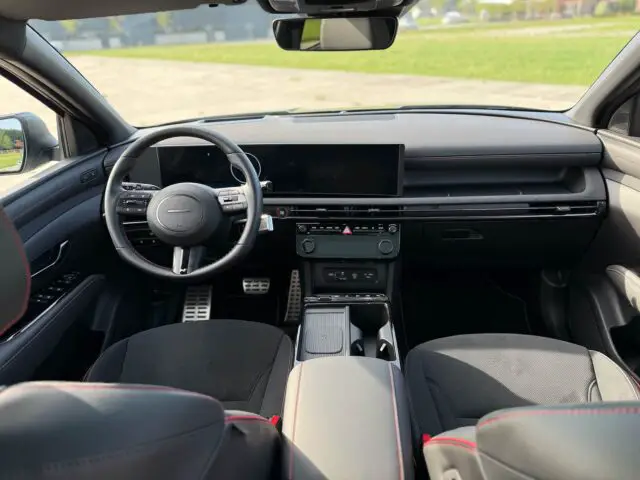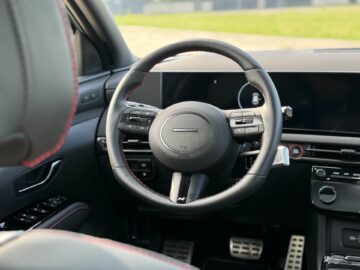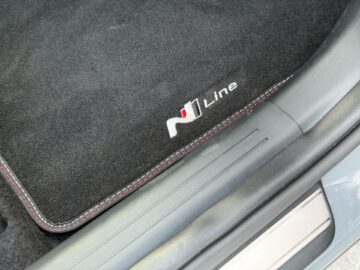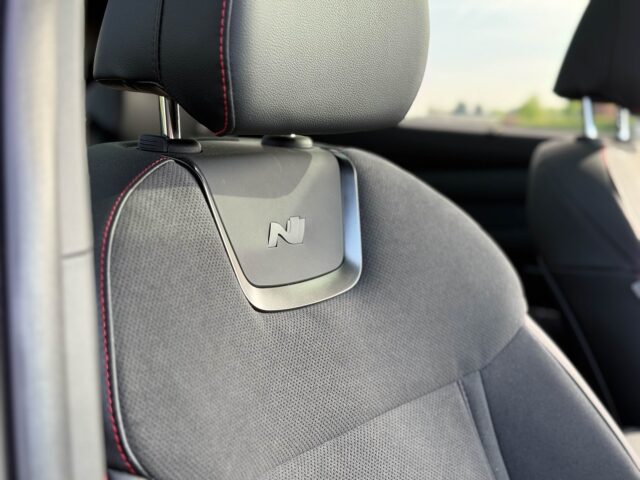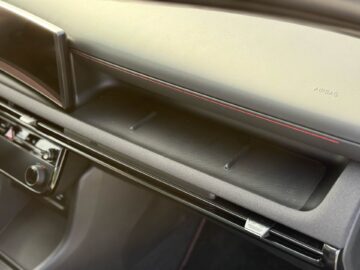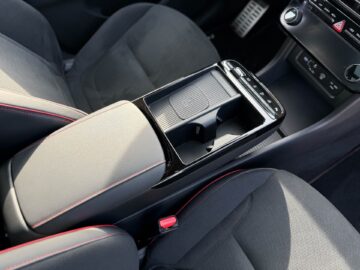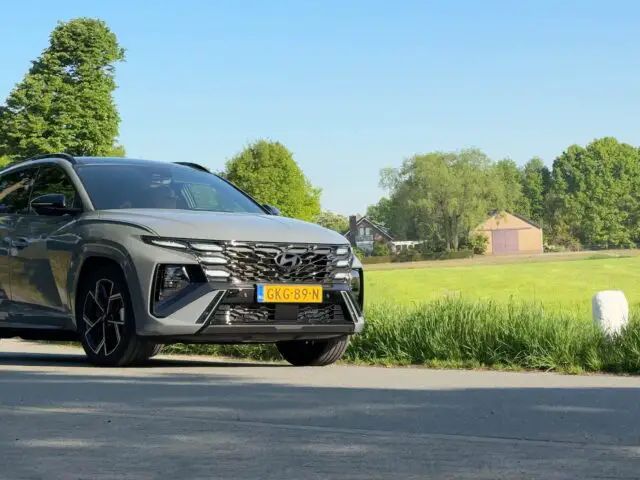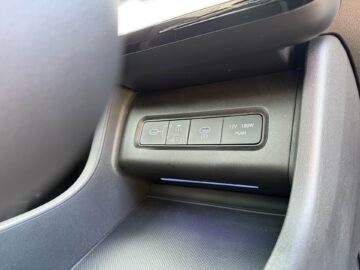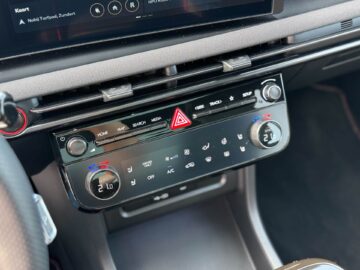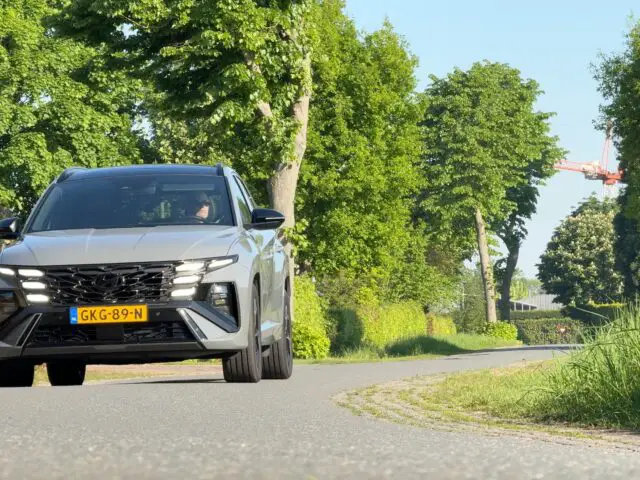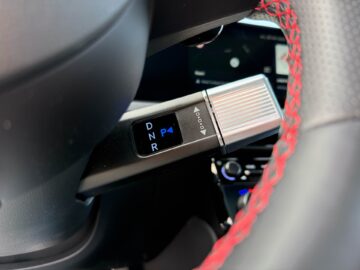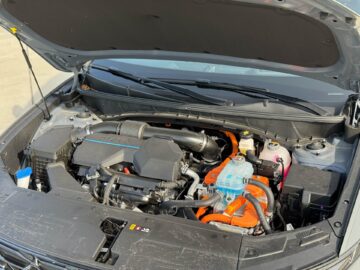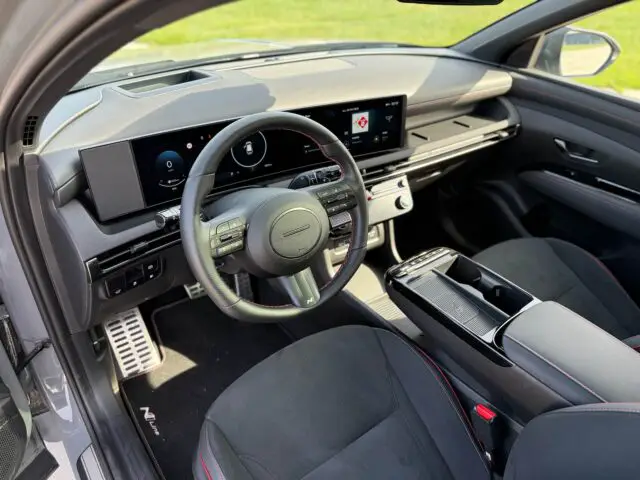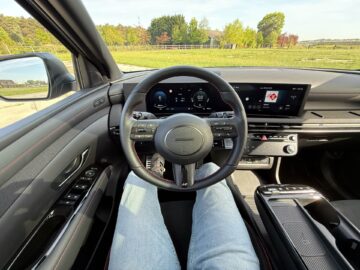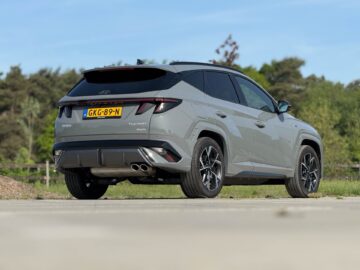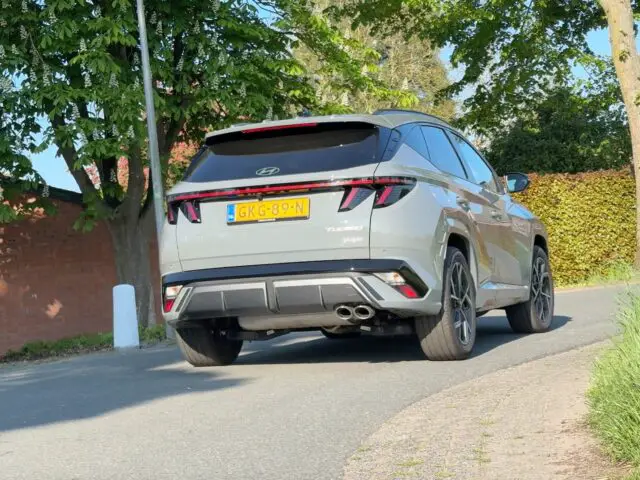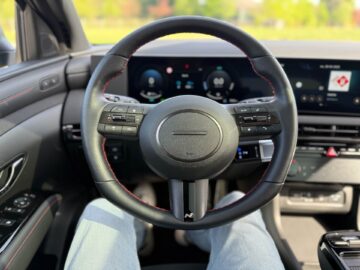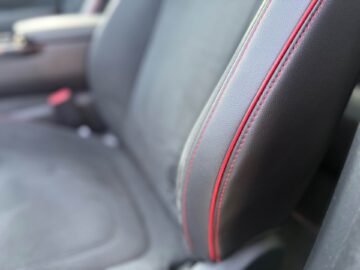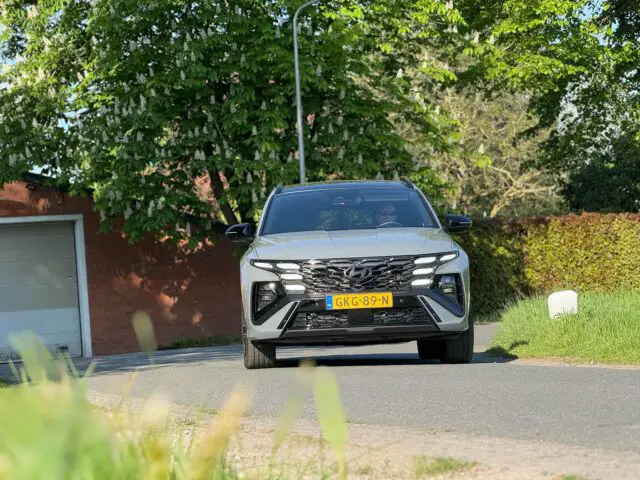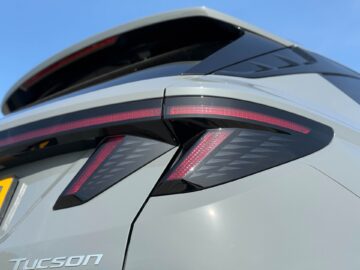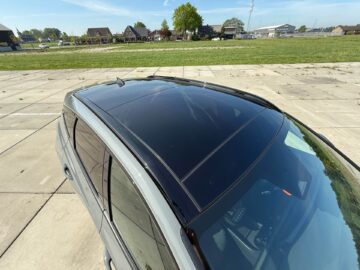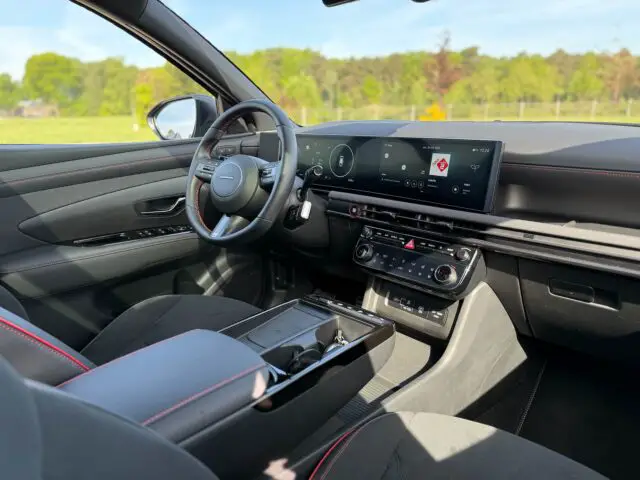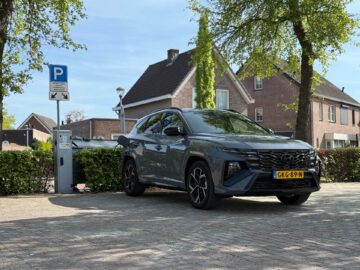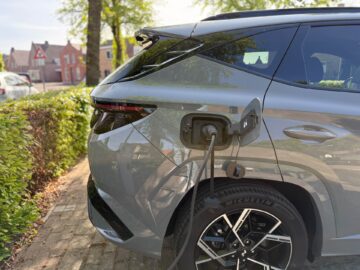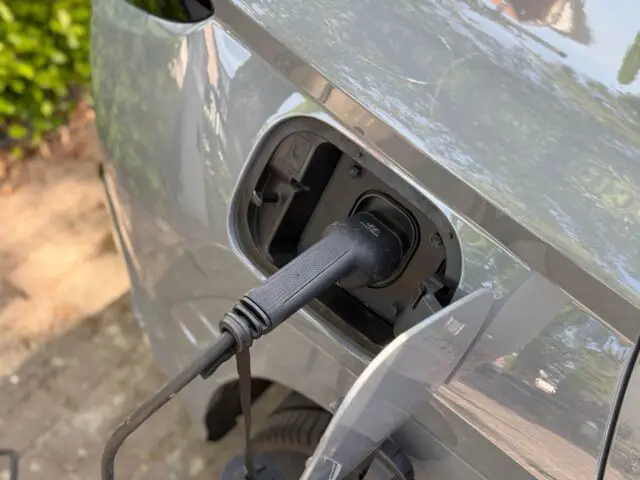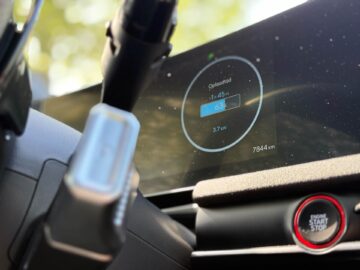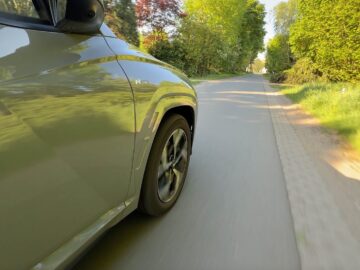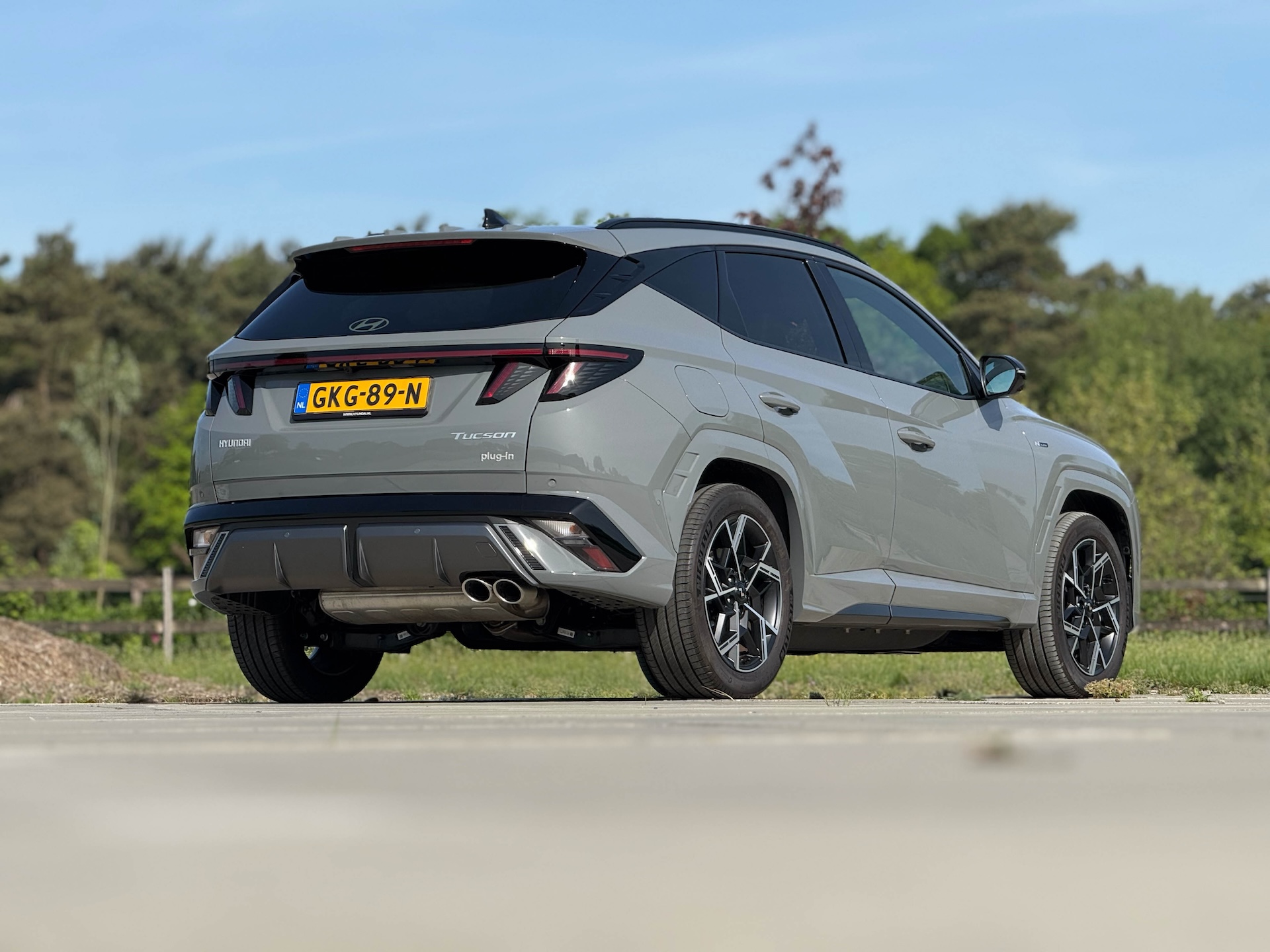Review – Hyundai Tucson Plug-in Hybrid N Line (2025), has clever invention!
Adjustments Hyundai Tucson
First, let’s take a look at what exactly is new on the Hyundai Tucson. Of course, the first thing that stands out is the new front end with a modified grille and custom Parametric Hidden Lights. The car also gets new wheel designs. The new bumpers and skidplates now run seamlessly from left to right. The rear skidplate is larger and now additionally integrated into the bumper frame making the TUCSON look even wider. The Hyundai rear logo is again incorporated into the rear window.
Complete new dashboard
The interior also underwent a metamorphosis, with a completely redesigned dashboard. Fine thing about the interior: the seats are excellent. Furthermore, after all the changes, the interior looks a bit restless because of the many lines. On the other hand, the ergonomics are fine, because all functions are within easy reach and the operation is logical. Very nice that Hyundai still uses buttons. The new three-spoke steering wheel sits comfortably in the hand and lacks a traditional Hyundai logo. You do look out for an H but in Morse code.
SLIM VIEW in Hyundai Tucson N Line (2025) – REVIEW – AutoRAI TV
Curved panoramic display
As a driver, you look out onto a curved panoramic display consisting of a 12.3-inch digital instrument panel and a 12.3-inch infotainment touchscreen. The system also offers wireless Apple CarPlay and Android Auto and is capable of Over-The-Air (OTA) software updates. Fine is the 12-inch head-up display. This system projects information – such as navigation directions and alerts – in front of your nose. A system like climate control has its own 6.6-inch touchscreen. Furthermore, we detect a 12V outlet and two USB-C ports (one with data support). Passengers in the back seat have access to two USB-C ports, placed under the rear seat vents.
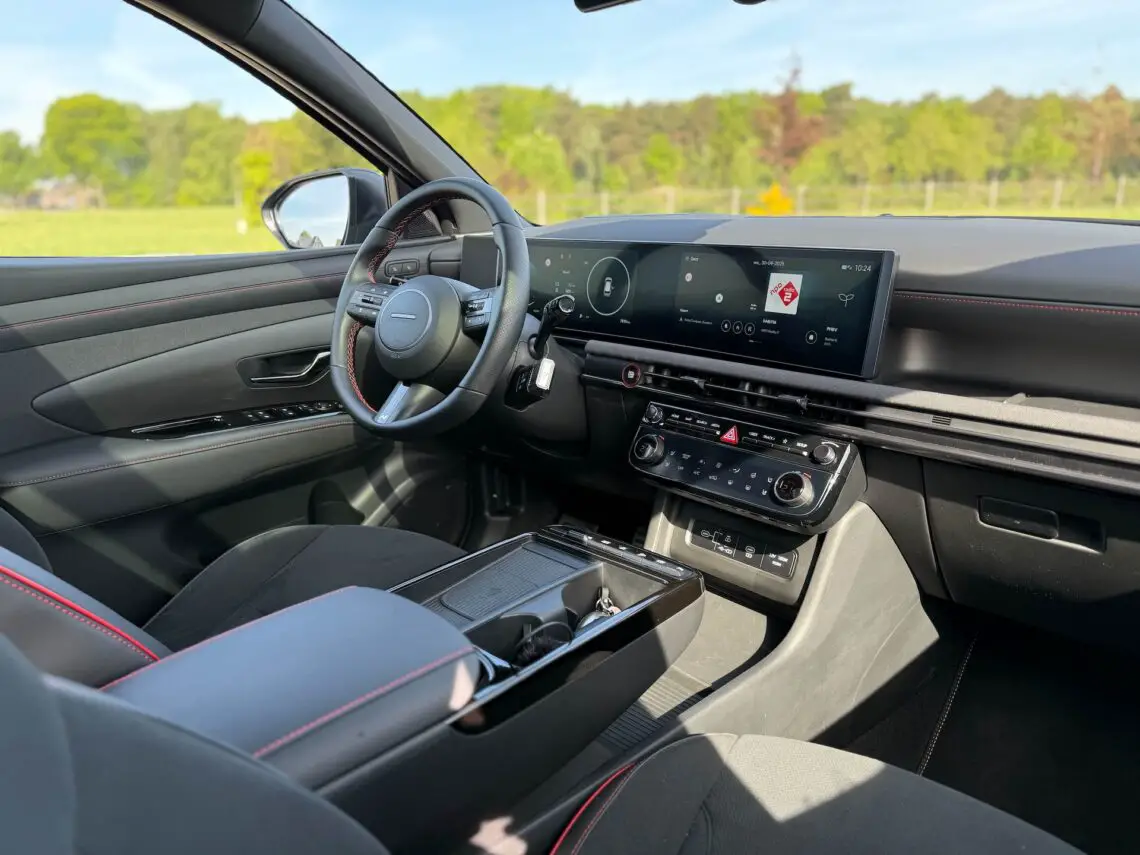
Hyundai Tucson N Line
You’ve probably seen it: this is the N Line version. It looks extra sporty. Features include a more aggressive-looking new front bumper and rear bumper. Furthermore, the N Line is on 19-inch ‘N Line’ alloy wheels with 235/50 R19 tires. This car also has body-color sideskirts and various red exterior and interior accents. The car’s interior features include suede/leather-look seat upholstery with red stitching, a sports steering wheel and aluminum designer pedals.
Driving assistance systems: maybe even too much?
Driving assistance systems, of course, are plentiful. Some you’d rather turn off than on, but for the enthusiast: it’s all there. Think highway assist, lane keeping assist, collision prevention system, traffic sign recognition, blind spot monitoring including camera image when indicating direction, speed limiter, fatigue recognition, speed warning and more.
Powertrain Hyundai Tucson Plug-in Hybrid
The powertrain of this Hyundai Tuscon 1.6 T-GDI PHEV consists of a 1.6-liter four-cylinder turbocharged gasoline engine rated at 117.6 kW (158 hp), supplemented by 66.9 kW of electropower. System power comes out to 252 hp with 350 Nm of torque. The battery itself has a capacity of 13.8 kWh, good for a theoretical electric driving range of 66 kilometers. Important to know: there is a choice of a PHEV version with front-wheel drive or all-wheel drive. The additional price for AWD is about 1,500 euros. Moreover, on paper, the version with AWD gets a little less far on a full charge of electricity: 63 kilometers. This is mainly because this version is 64 kilograms heavier compared to the 2WD version.
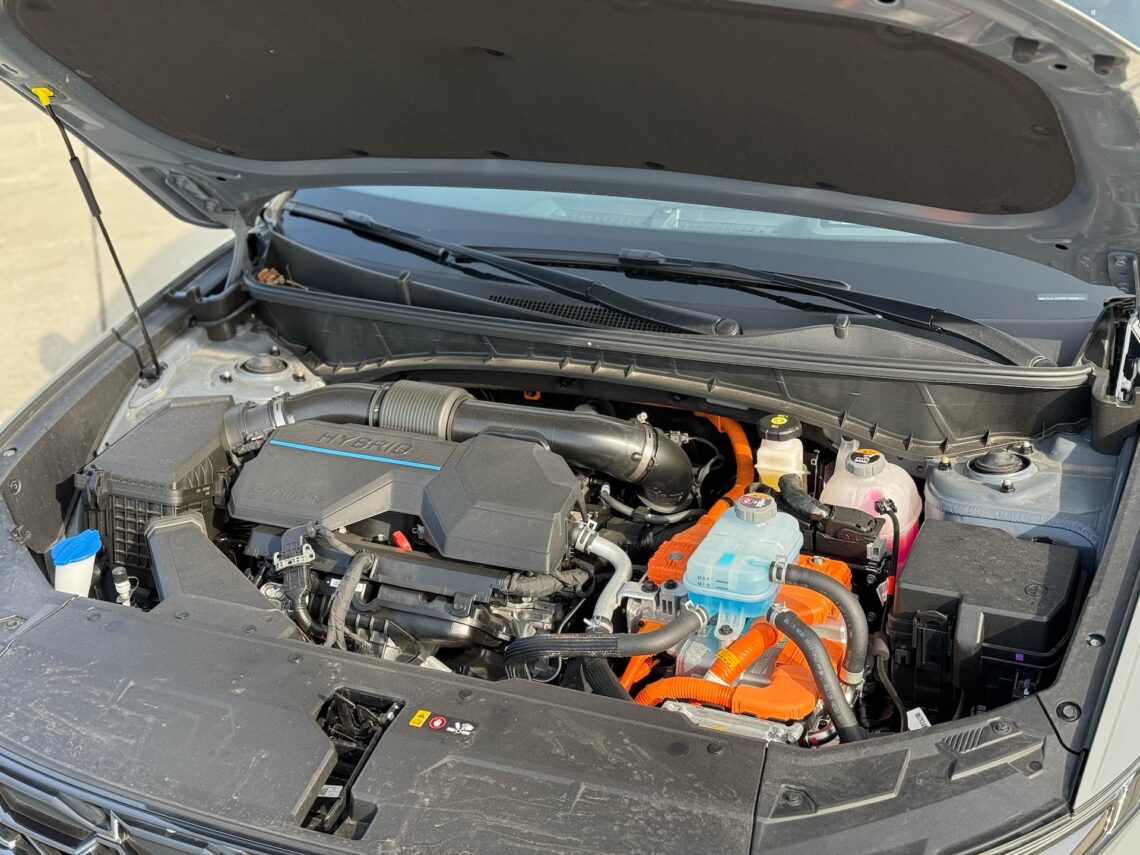
Smart find!
The Hyundai Tucson has flippers behind the wheel, intended for energy recovery. There are four modes in total: level 1, level 2, level 3 and max. The latter is always activated temporarily. By “pulling” and holding the left flipper, the car brakes extra strongly on the electric motor, even to a complete stop. A handy feature because it means you can always apply extra brakes.
Average fuel consumption
On paper, the front-wheel-drive plug-in hybrid has an average fuel consumption of 1.38 l/100 km. In practice, consumption is always higher. Moreover, you have to be fanatical about charging the car to take maximum advantage of PHEV technology. Rather drive without charging? Then you’re better off opting for the hybrid version.
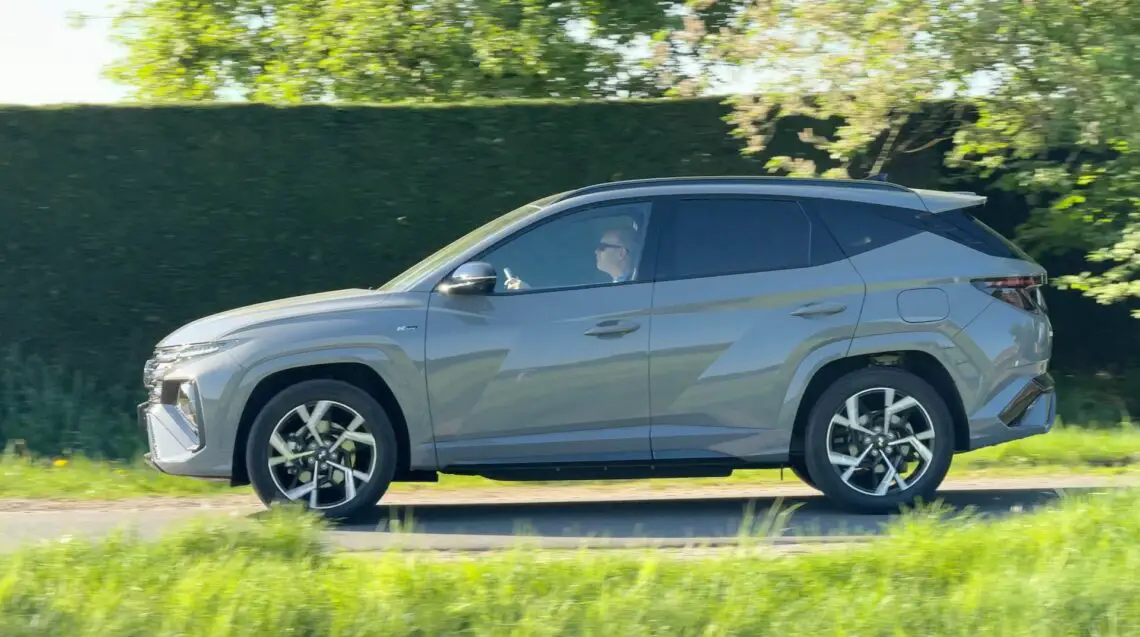
Price difference Hyundai Tucson Hybrid and Tucson Plug-in Hybrid
How big are the price differences between a Hyundai Tucson Hybrid and Tucson Plug-in Hybrid? As an i-Motion, the Tucson Hybrid starts at 45,000 euros. The top model – the N Line Sky – costs 54,000 euros. The Hyundai Tucson Plug-in Hybrid 2WD has a lower starting price: 44,000 euros. As an N Line Sky, you pay 53,000 euros. Below the line, that makes a difference of 1,000 euros.
Simple choice, right?
Okay, so that’s an easy choice? Well, not quite. Because with a plug-in hybrid you commit to having to continuously recharge the powertrain, whereas in practice you can drive about 40 to 50 kilometers electrically. With a hybrid version, you don’t have to worry about anything. The Tucson Hybrid also weighs 175 kilograms less compared to the PHEV. But a plug-in hybrid is more advantageous in road tax, right? No, that advantage is no longer available. So you will soon pay more road tax than a hybrid. The braked towing weight of the normal hybrid is also higher: 1,360 kilograms for the hybrid versus 1,210 for the plug-in hybrid. The hybrid also has a larger luggage space: 616 liters versus 558 liters for the plug-in hybrid. Also know that the gasoline tank of a PHEV, at 42 liters, is no less than 10 liters smaller than a hybrid. So the mile-eater better opts for a hybrid.
The disadvantage – to what extent you can speak of it – of the Hybrid is that you have less system power at your disposal. This powertrain produces 215 hp versus 252 hp for the plug-in variant. Torque, however, is the same at 350 Nm. In all cases, the Tucson accelerates from 0 to 100 km/h in about 8 seconds and the top speed is 186 km/h.
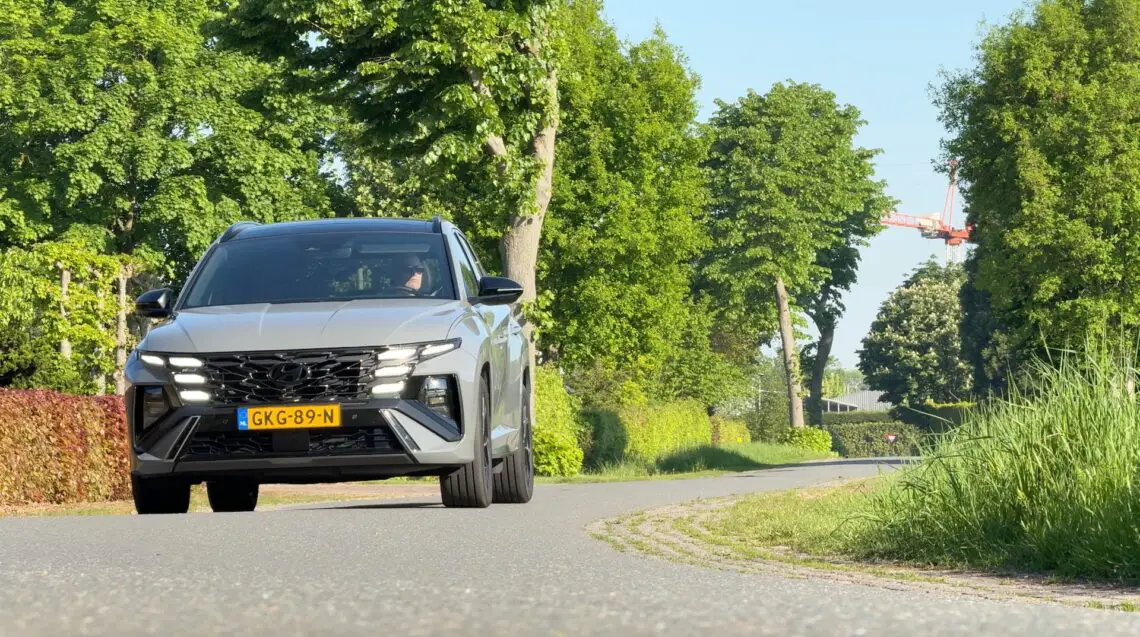
Conclusion review Hyundai Tucson
The Hyundai Tucson is a delightful travel car with plenty of space. It steers extremely fine, feels nimble and offers unprecedented value for money. The seats are excellent and also all the functions in the interior are logically arranged and also operate in an understandable way. The choice is yours whether to go for a hybrid or plug-in hybrid.
Equipment Hyundai Tucson N Line Sky
- 19-inch ‘N Line’ alloy wheels with 235/50 R19 tires
- Door frame, luxury finish
- Digital Key 2.0
- Fog lights, rear LED
- N Line rear spoiler with integrated third brake light
- N Line exterior
- Seat upholstery, suede/leather look with red stitching, N Line design
- Steering wheel sport, leather trim
- Panoramic sliding/tilting roof
- Charging cable 11 kW 3-phase & ICCB cable
- Tailgate, automatic
- Highway Driving Assist (HDA).
- Interior lighting, colored
- KRELL Premium Audio System
- Door frame, luxury finish
- Remote Folding, 2nd row of seats
- Steering wheel, heated
- Auto-dimming interior mirror
- Blind-Spot Collision-Avoidance Assist (BCA)
- Cruise control with Stop & Go function, speed limit, navigation assistance, adaptive (NSCC)
- Roof rails
- Wireless charging capability (phone)
- LED daytime running lights, recessed in front grille
- Privacy Glass
- Front seats, lumbar support electrically adjustable
- Rear lighting, full LED
- Full digital instrument panel (12.3-inch)
- Heat-resistant windshield
- Blind-spot View Monitor (BVM).
- Digital Key 2.0
- Head-up Display (HUD).
- Buttons for electric adjustment on passenger seat cheek
- Net in luggage compartment
- Parking sensors, front, rear & side
- Rear Parking Collision-avoidance Assist (PCA)
- Rear Occupant Alert (ROA) with radar detection
- Driver and passenger seat, electrically adjustable with memory function (driver)
- Front & rear seats, heatable
- Front seats, ventilated
- Surround view Monitor (SVM) – 360 degree camera
- Air vents, rear in center console
- Front lighting, full LED with automatic high beam (IFS)
- Blinds in rear doors
- 12.3-inch multimedia screen with navigation
- Wireless Apple CarPlay & Android Auto
- Over-The-Air updates, navigation
- Over-The-Air updates, auto
- Steering wheel, audio controls
